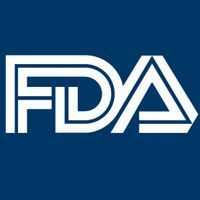Video
Enasidenib's Role in IDH-Mutant Acute Myeloid Leukemia
Transcript:
Harry Erba, MD, PhD: This is great, right?
Alexander E. Perl, MD: Absolutely.
Harry Erba, MD, PhD: We have lots of things to discuss now, and we’ve only gone through 2 of the approvals from this year. We’ve got to get to the third one. This is enasidenib. Why don’t you tell us, Sasha, about the role of IDH1 and IDH2 mutations and the data supporting enasidenib.
Alexander E. Perl, MD: IDH mutations are not AML defining, so it’s not a core-binding factor infusion or a nucleoplasm mutation. We see them in MDS, we see them in MPNs, and we see them in AML. We see them even as a chip mutation in patients just walking down the street with normal blood counts. That being said, there’s a significant fraction of patients with AML who have these mutations. There are 2 types. They occur in 2 different enzymes, but enzymes that achieve the same thing. They’re members of the Krebs cycle in normal health when they’re wild-type. But when they’re mutated, they have a different function instead of the forward reaction that converts isocitrate to succinate. They run a reverse reaction that converts alpha-ketoglutarate to a metabolite called 2 hydroxyglutarate, or 2HG.
2HG basically creates all of the phenomena that we know are associated with IDH mutations. It disrupts a number of enzymes that require alpha-ketoglutarate as a cofactor. That includes the TET2 cytosine dioxygenases. It includes the Jumonji-C histone demethylases that lead to an epigenetic change in the cell that disrupts differentiation programming. That’s why we think that this contributes to leukemogenesis, because it has this abnormal hematic differentiation program that’s caused by 2HG. What these drugs do is affect the mutant cells, but they really don’t have much effect on wild-type IDH, and they inhibit the enzyme when it’s running that abnormal reaction that generates 2HG. The functional effects of 2HG go away and the effects of the 2HG, therefore, go away. That’s why we see these patients respond with differentiation to these agents. That’s what’s been seen in both in vitro studies prior to the clinical trials and in clinical studies with the patients. We saw similar effects take the leukemic blast and watched those cells differentiate into neutrophils while maintaining the IDH mutations in the neutrophils that were generated.
What happens in the clinic? That’s what it looks like. The drug has relatively few treatment-associated side effects in phase I/II testing. It was remarkably well tolerated. There were some GI disturbances that were reported, some case disturbances, and some change in appetite. There were bumps in indirect bilirubin, but not really major side effects where you’d worry about your patient feeling so sick that it would limit your ability to give the drug. And actually, if you look at the dose of the drug that inhibits the enzyme and drops the 2HG levels, you don’t need very much of it. Even though they did a phase I dose escalation to really high doses, the phase II dose that was established was quite low. They just picked a number in terms of a dose that would turn off 2HG. And by doing that, they found a tolerable dose that inhibited the target, got the biologic effects, and patients could take. It’s both well tolerated and quite effective. The clinical effects include improvements in cytopenias. Many of the patients have reductions in bone marrow blasts, and CRs were seen in about 25% of patients.
Eunice Wang, MD: But not 100% of patients.
Alexander E. Perl, MD: But not 100%, and not everybody responded. I think that’s important because you would figure if everybody has the mutation…
Eunice Wang, MD: It’s a targeted agent, right?
Alexander E. Perl, MD: It’s a targeted agent, and everybody had to have a mutation to go on the study. Wouldn’t you expect to see that? It gets back to the original point. Each leukemia comes from multiple mutations. So, if IDH is holding up that stool—if it’s a 4-legged stool from 4 mutations—you can cut out 1 of those legs, but it might hold up. But some leukemias might be a 3-legged stool, and if you get rid of the IDH mutation it really falls over. It’s much more sensitive. And so, from patient to patient, there were variable responses. But it was well tolerated across the board. It led to transfusion independence, improved quality of life on the study, and a decent number of patients had CRs that were durable. So, clinical benefit was easy to see.
Transcript Edited for Clarity









